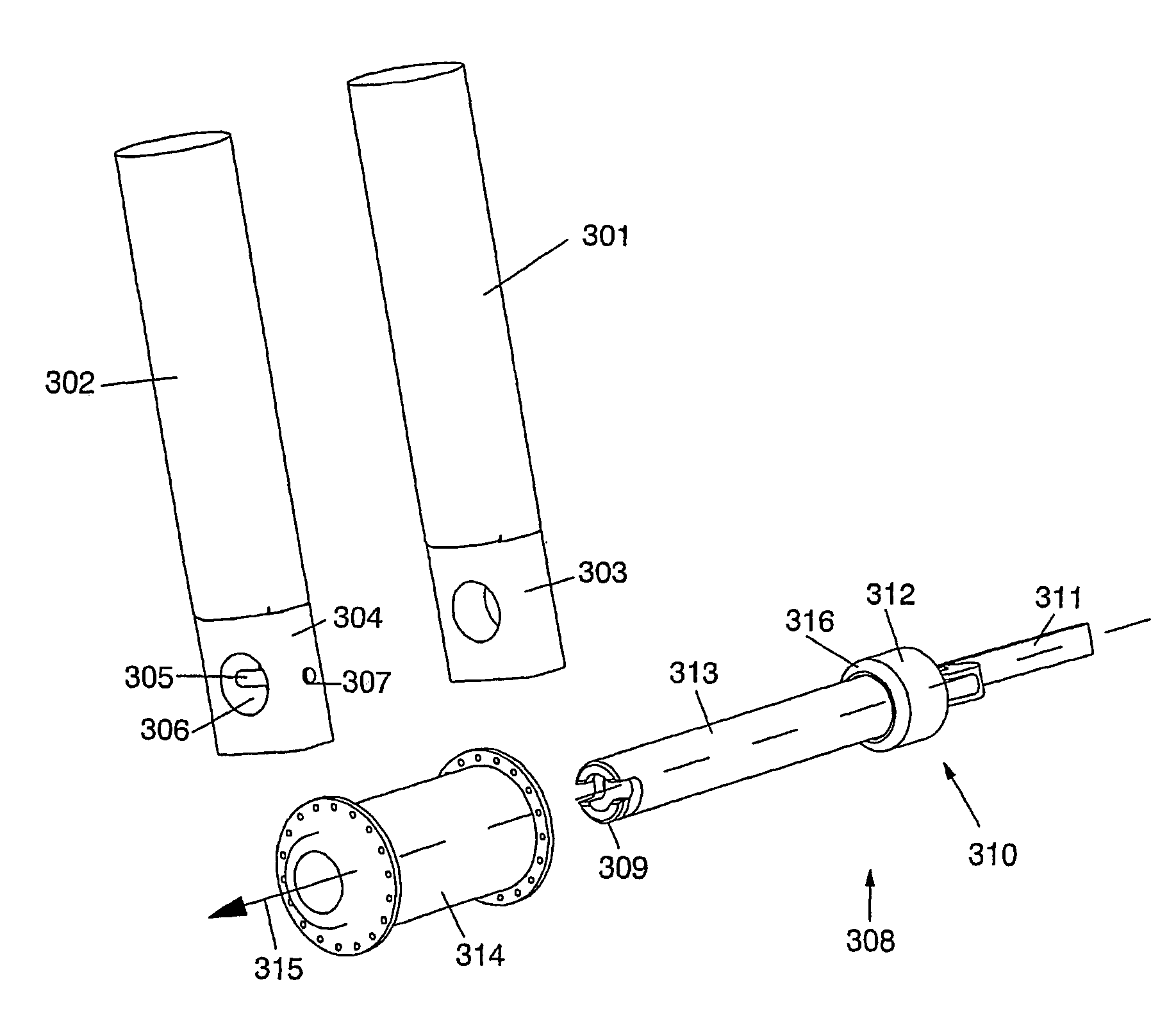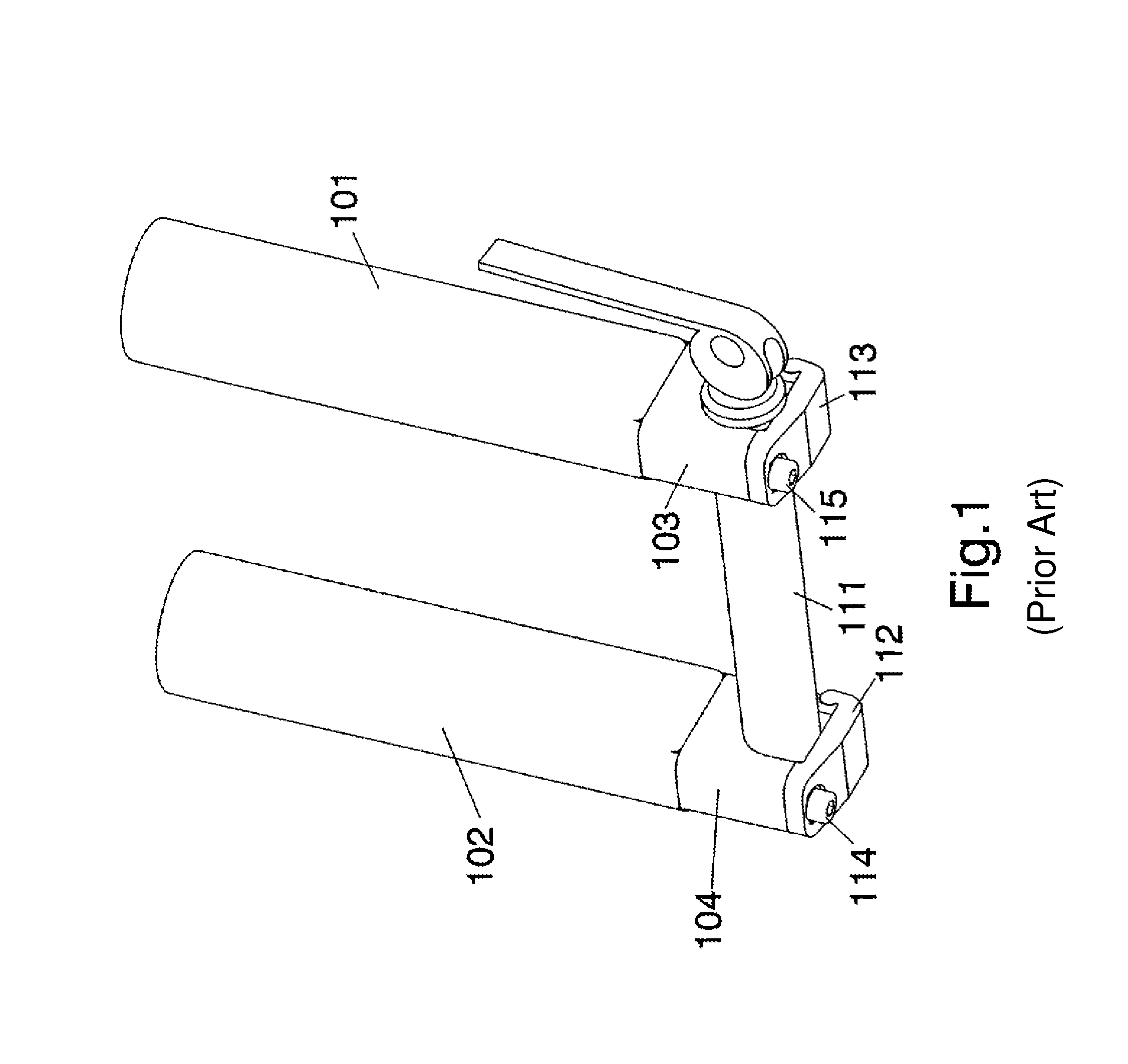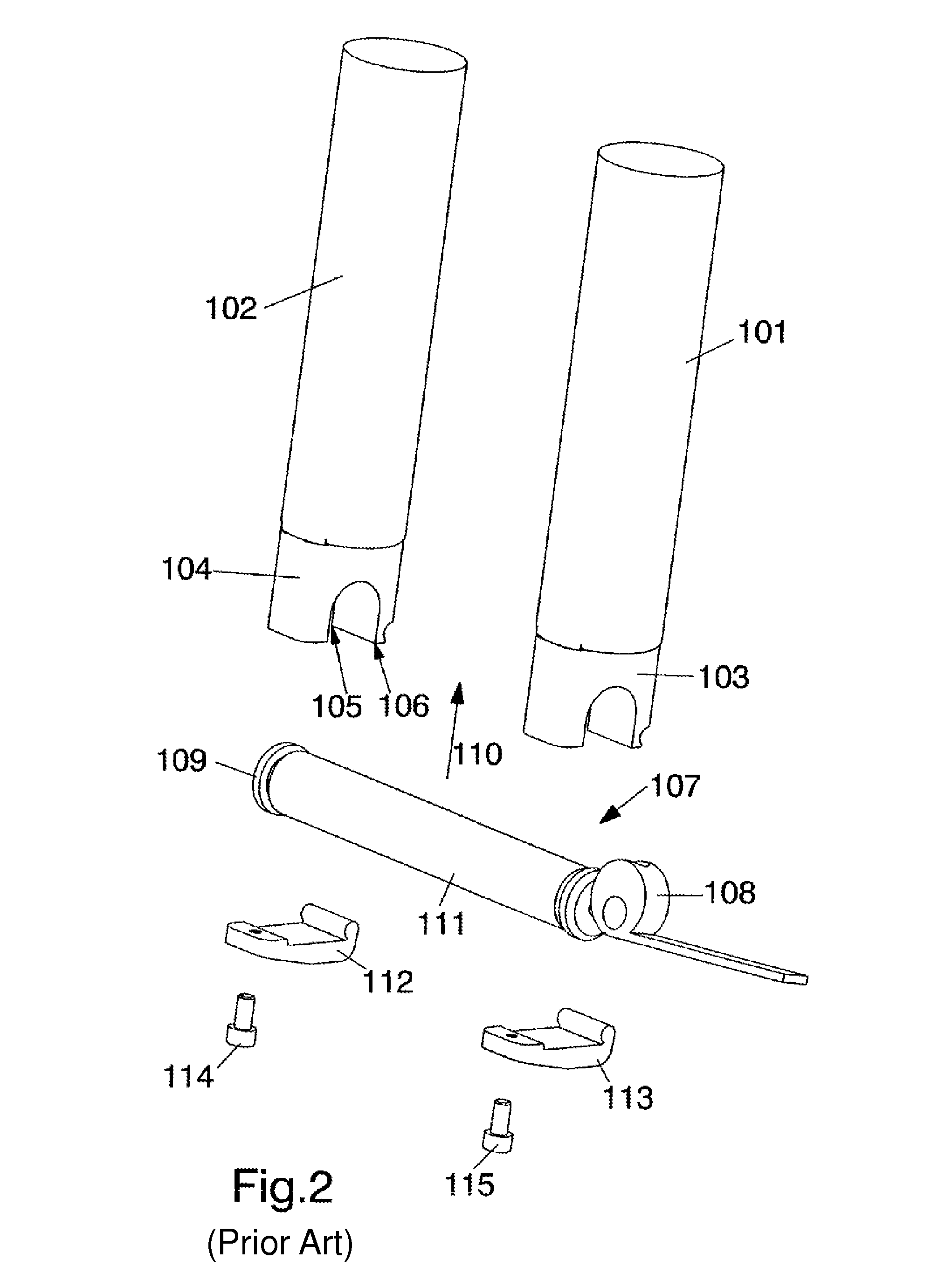Wheel clamping assemblies
a technology for clamping assemblies and wheels, which is applied in the direction of cycle equipment, release mechanisms, steering devices, etc., can solve the problems of unnecessarily complicated, unsatisfactory rigidity of wheel mounting and assembly, and time-consuming, and achieve the effect of reducing the level of complication
- Summary
- Abstract
- Description
- Claims
- Application Information
AI Technical Summary
Benefits of technology
Problems solved by technology
Method used
Image
Examples
Embodiment Construction
[0055]There will now be described by way of example a specific mode contemplated by the inventors. In the following description numerous specific details are set forth in order to provide a thorough understanding. It will be apparent however, to one skilled in the art, that the present invention may be practiced without limitation to these specific details. In other instances, well known methods and structures have not been described in detail so as not to unnecessarily obscure the description.
[0056]FIG. 3 schematically illustrates, in exploded perspective view, a wheel clamping assembly in accordance with a preferred embodiment of the present invention. The assembly comprises a pair of forks, such as the front forks of a mountain bike, 301 and 302. The fork legs 301, 302 are elongate and towards the lower end, that is the end to which an axle is to be attached, each fork leg comprises a substantially (full or near) closed bore wheel mounting point 303 and 304 respectively. Fork leg...
PUM
 Login to View More
Login to View More Abstract
Description
Claims
Application Information
 Login to View More
Login to View More - R&D
- Intellectual Property
- Life Sciences
- Materials
- Tech Scout
- Unparalleled Data Quality
- Higher Quality Content
- 60% Fewer Hallucinations
Browse by: Latest US Patents, China's latest patents, Technical Efficacy Thesaurus, Application Domain, Technology Topic, Popular Technical Reports.
© 2025 PatSnap. All rights reserved.Legal|Privacy policy|Modern Slavery Act Transparency Statement|Sitemap|About US| Contact US: help@patsnap.com



